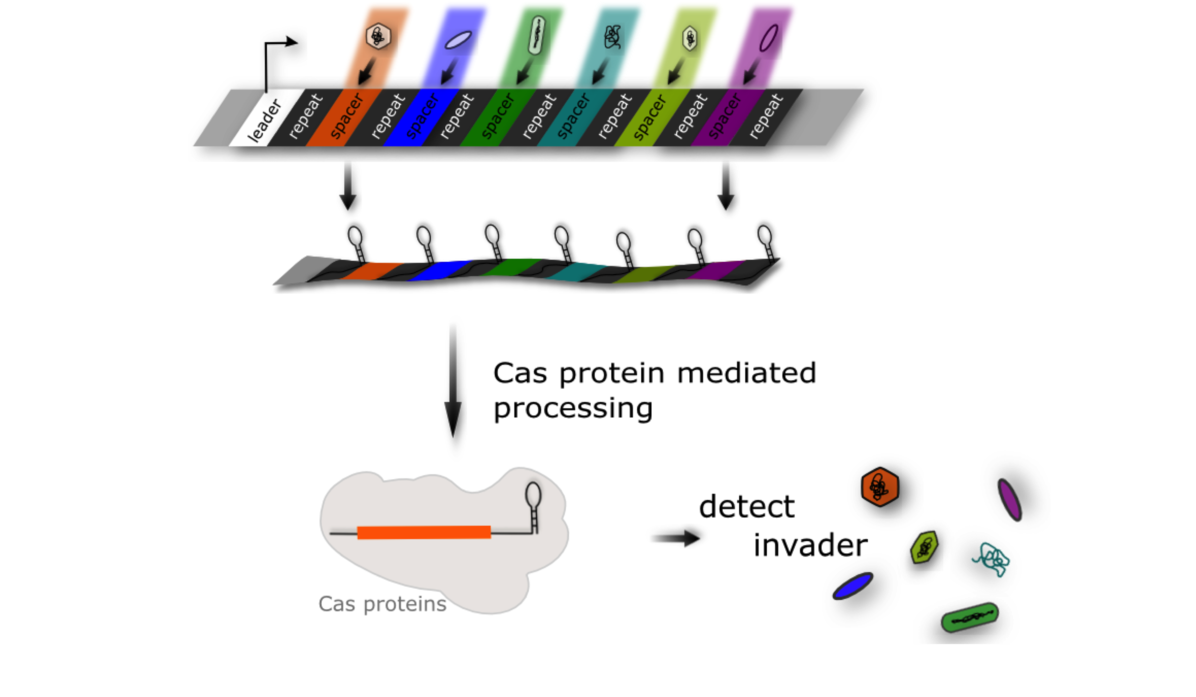All prokaryotic cells have to fend off foreign genetic elements like for instance viruses. To do that they have developed several different defence strategies. The recently discovered new defence strategy is the so called prokaryotic immune system also called CRISPR-Cas (CRISPR: clustered regularly interspaced short palindromic repeats, Cas: CRISPR-associated). It is adaptive, since cells can become immune against new invaders and it is heritable, since the information about the invader is stored in the genome.
The CRISPR-Cas system consists of clusters of repetitive chromosomal DNA in which short palindromic DNA repeats are separated by spacers, the latter being sequences derived from the invader. In addition, a set of proteins, the Cas proteins, is involved in this defence reaction. We are investigating the CRISPR-Cas system in the halophilic archaeon Haloferax volcanii. Haloferax encodes a type I-B CRISPR-Cas system with eight Cas proteins (Cas1-Cas8b) and three CRISPR RNA locis.
We are analysing the biological function of the eight Cas proteins by generating deletion strains for each of the cas genes. Using a plasmid-based invader assay we investigate the requirements for target DNA recognition and silencing. In addition we are developing molecular biology tools based on CRISPR-Cas for application in Haloferax like the gene repression tool CRISPRi.

